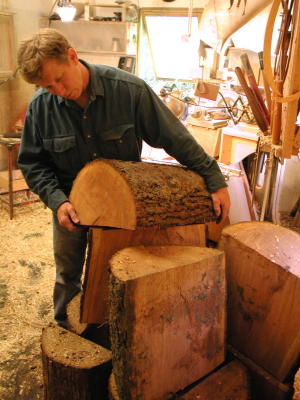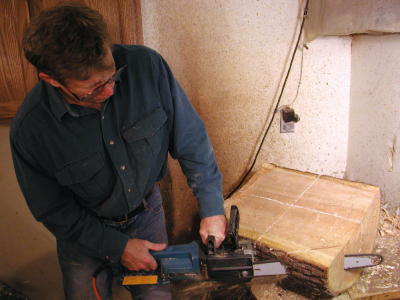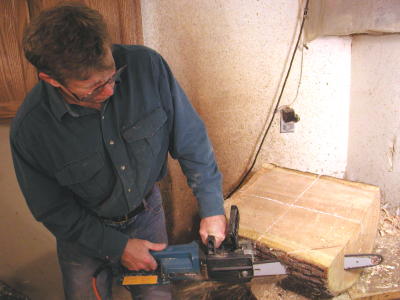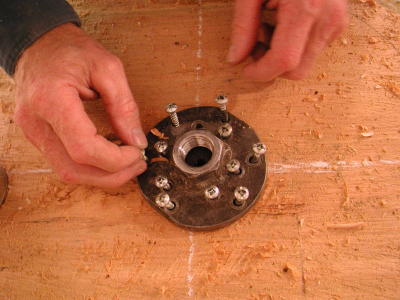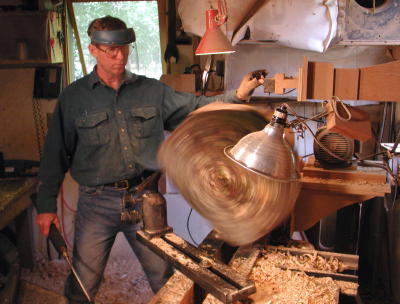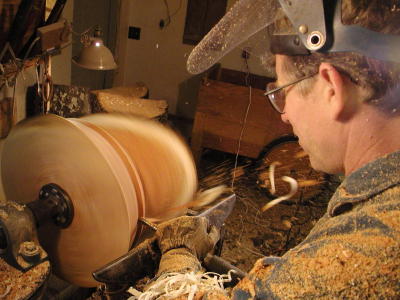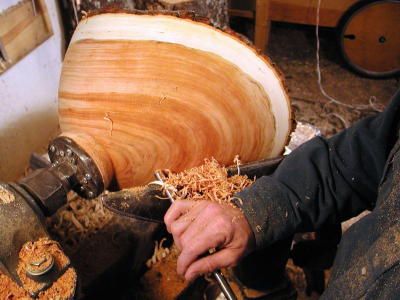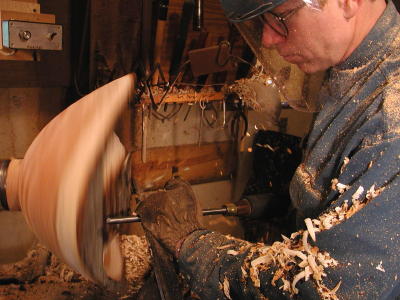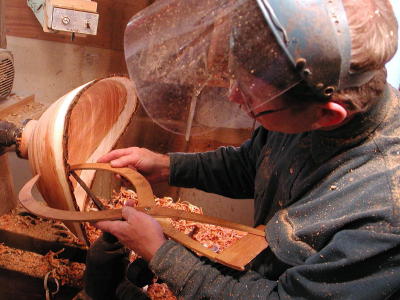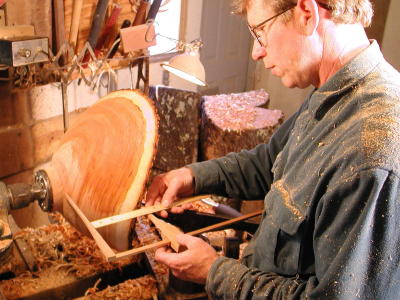Here are the stages I go through from log to finished bowl.
Each bowl begins as a section of a log, chain-sawn to rough shape and screwed onto the faceplate of my homemade lathe. Next they are turned using gouges and/or boring bars, and sanded smooth while still on the lathe. I turn them thin, so that they warp rather than crack as they dry. Because they warp, none are perfectly round, but each takes on some unique shape, accentuating any irregularity already there in the log. Greenwood turning allows me to make larger, deeper, more varied bowls than possible with dried lumber. There is a strong element of the found object involved, as my wife and I scan roadways, yards, logging sites, and even woodpiles for interesting pieces of fine hardwoods. Maple, cherry, walnut, oak, apple, peach, poplar, hickory ... there is so much variety in the trees native to our area. My mission is to preserve some essence of a tree in each bowl, and make something beautiful out of what might have been discarded otherwise.
First I select a blank from the pile of log sections I have cut
from the piles along my driveway.
|
|
|
|
|
|
|
|
|
|
|
|
|
|
|
|
|
|
|
|
